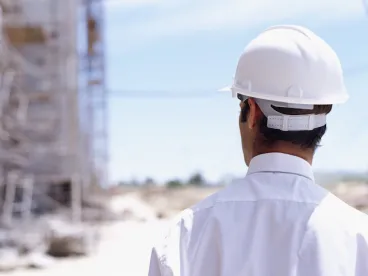Unitowners in condominium associations and homeowners in homeowner associations are often confused about the legal responsibilities of design professionals, general contractors, subcontractors and municipal building officials and building inspectors regarding construction of their homes. This blog is intended to briefly clarify and explain the relationship among these various people and entities.
Architects are licensed professionals who design buildings to meet the needs of the owner. They are required to adhere to all applicable building codes and standards in the industry. To that end the architect creates construction drawings, details, and specifications to direct the subcontractors as to the materials or systems they are to use and how those materials and systems are to be integrated into the overall construction in such a manner as to satisfy the design intent of the architect. Architects have to have an overall understanding of the systems and materials being designed into a building and the requirements of the applicable building codes governing construction.
The scope of work of the architect varies from job to job and is typically defined by the contract signed by the architect. For example, the scope of work could be as narrow as being hired by builders to simply produce a set of construction drawings that can be used by the builder to obtain a building permit. After that, the architect has no further involvement. At the other end of the spectrum, the architect is involved in reviewing and approving submittals of materials the builder or subcontractors want to use on the project, reviewing contractor applications for payment of invoices, and even reviewing work done by the general contractor/subcontractors in the field for compliance with the plans, manufacturer’s installation specifications, and details.
The Building Department of the municipality is responsible for protecting life and safety. They review the architectural and other construction drawings for compliance with building codes prior to issuing a building permit. They review things like the height of the building, square footage, intended occupancy, fire ratings, seismic requirements, and other considerations with an eye towards keeping the public safe. Once construction is under way, the building inspectors visit the site to check to see if the building is being built per the codes and approved plans. When construction defects are discovered and damage is found, many homeowners and condominium unit owners want to know why the building inspector and township are not responsible. While they may have some moral responsibility, the law of New Jersey gives them a qualified immunity from liability for negligence in doing building inspections. In the absence of fraud (ie, taking bribes), the building inspectors and the municipalities are immune from civil liability. This immunity was presumably granted by the legislature to prevent every municipality in New Jersey from being bankrupted by construction defect cases.
The general contractor can also be, and often is, the owner of the project. Where there is an owner separate from the general contractor, the general contractor is hired by the owner of the project to handle the overall construction, supervision, and coordination of the work of the subcontractors to ensure that the construction project meets the schedule for delivery of the units and is built in accordance with the approved construction drawings, applicable building codes, specifications and standards in the industry. The general contractor has to be cognizant of the fact that accepting the low bid from an unqualified subcontractor may lead to delays in the job or to construction defects that may not be detected for many years.
In a similar vein, the general contractor who selects a complicated , expensive, high quality system and then saves money by hiring cheap labor to do the installation work may well be creating construction defects that will be very expensive to fix when they are eventually discovered years later. Bear in mind that while the general contractor has general knowledge of the work being done by the subcontractor, the general contractor is relying upon the special skills of his specialty subcontractors in doing their trade work. The general contractor simply doesn’t have the expertise to knowledgeably supervise the work of the specialty subcontractor. However, that does not excuse the general contractor from getting the manufacturer’s installation specifications and details and doing spot checks to determine if they are being followed by the subcontractor.
The subcontractor is required to have the skill and knowledge to strictly adhere to the manufacturer’s installation specifications and details and to make sure that its work adheres to all applicable building codes. It is amazing to us how many times we take the deposition of subcontractors who have been installing stucco, EIFS, manufactured stone veneer, fiber cement panels and other claddings systems, only to find out that these subcontractors have never seen the manufacturer’s installation specifications and details that explain how the materials or systems in question are to be installed.
The liability of the architect, general contractor and subcontractors will vary from project to project. Specific questions about the culpability of entities and persons involved in a construction project can best be answered by counsel on a case by case basis.



 />i
/>i
